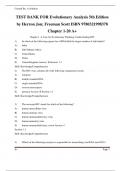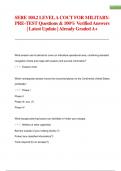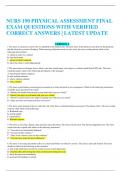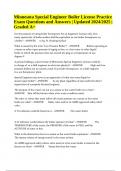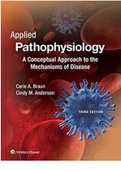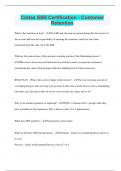Exam (elaborations)
TEST BANK FOR Evolutionary Analysis 5th Edition by Herron Jon; Freeman Scott ISBN 9780321998378 Chapter 1-20 A+
- Course
- Institution
- Book
TEST BANK FOR Evolutionary Analysis 5th Edition by Herron Jon; Freeman Scott ISBN 9780321998378 Chapter 1-20 A+..
[Show more]
